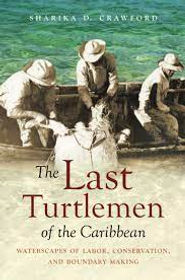A Voyage ‘Round the World and Back in Time
Andy Colpitts
A Voyage ‘Round the World and Back in Time
Andy Colpitts
A Voyage ‘Round the World and Back in Time
Andy Colpitts
A Voyage ‘Round the World and Back in Time
Andy Colpitts
From Fathoms to Footlights: Whaling and Theatrical Lighting at the Turn of the Nineteenth Century
Andy Colpitts
.png)
.png)
.png)
.png)
Our Readings

Our book line up (and some other histories of commodities)
Each week, our discussion centered on a book tracing an Atlantic commodity. Our first week’s reading, Sweetness and Power: The Place of Sugar in the Modern World, Sidney Mintz’s classic anthropological study of sugar production and consumption, provided conceptual grounding in the study of commodity chains and Atlantic history. Two more recent books, Potosí: The Silver City that Changed the World by Kris Lane and Empire of Cotton: A Global History by Sven Beckert completed the “big three” of Atlantic commodities––sugar, silver, and cotton––that, as these authors contend, offered fundamental contributions to global capitalism as we know it today. Marcy Norton in Sacred Gifts, Profane Pleasures: A History of Tobacco and Chocolate in the Atlantic World and Jennifer Anderson in Mahogany: The Cost of Luxury in Early America both looked at luxury goods from the Americas that shaped New World society and reshaped Old World desires. Unlike many of these books, which saw American commodities transplanted into European societies, Judith Carney’s Black Rice: The African Origins of Rice Cultivation in the Americas argues that enslaved West Africans brought knowledge of rice cultivation to the Americas. That week, we also read a cluster of articles contesting and defending Carney’s thesis. In Final Passages: The Intercolonial Slave Trade of British America, 1619-1807, Greg O’Malley shows what was beyond the Middle Passage for many forced migrants from Africa. These final passages from colony to colony, O’Malley argues, underscore the extent to which the slave trade treated the enslaved as commodities rather than people. In our final weeks, Molly Warsh’s American Baroque: Pearls and the Nature of Empire, 1492-1700 and Sharika Crawford’s The Last Turtlemen of the Caribbean: Waterscapes of Labor, Conservation, and Boundary Making guided us through our discussion of how pearls and turtle shells shaped maritime empires and the independent nations that superseded them.
We often found in our discussions that these books, though diverse in methodology and scope, overlapped in unexpected and productive ways. Each book detailed a single commodity chain, but our discussions helped us find a multiplicity of entanglements among the chains: Spaniards appropriated Mexican chocolate and added Caribbean sugar to hide its bitter taste; New World silver made possible the intercolonial slave trade; wealthy British subjects in North America and England gathered around mahogany tables to enjoy Indian tea sweetened with Barbadian sugar, made with the sweat and blood of enslaved Africans, served in Chinese porcelain, and mixed with spoons made with silver from Potosí. These interrelations gave visibility to a claim that many of these authors made individually: that the early modern Atlantic world was part of an already globalized world.








